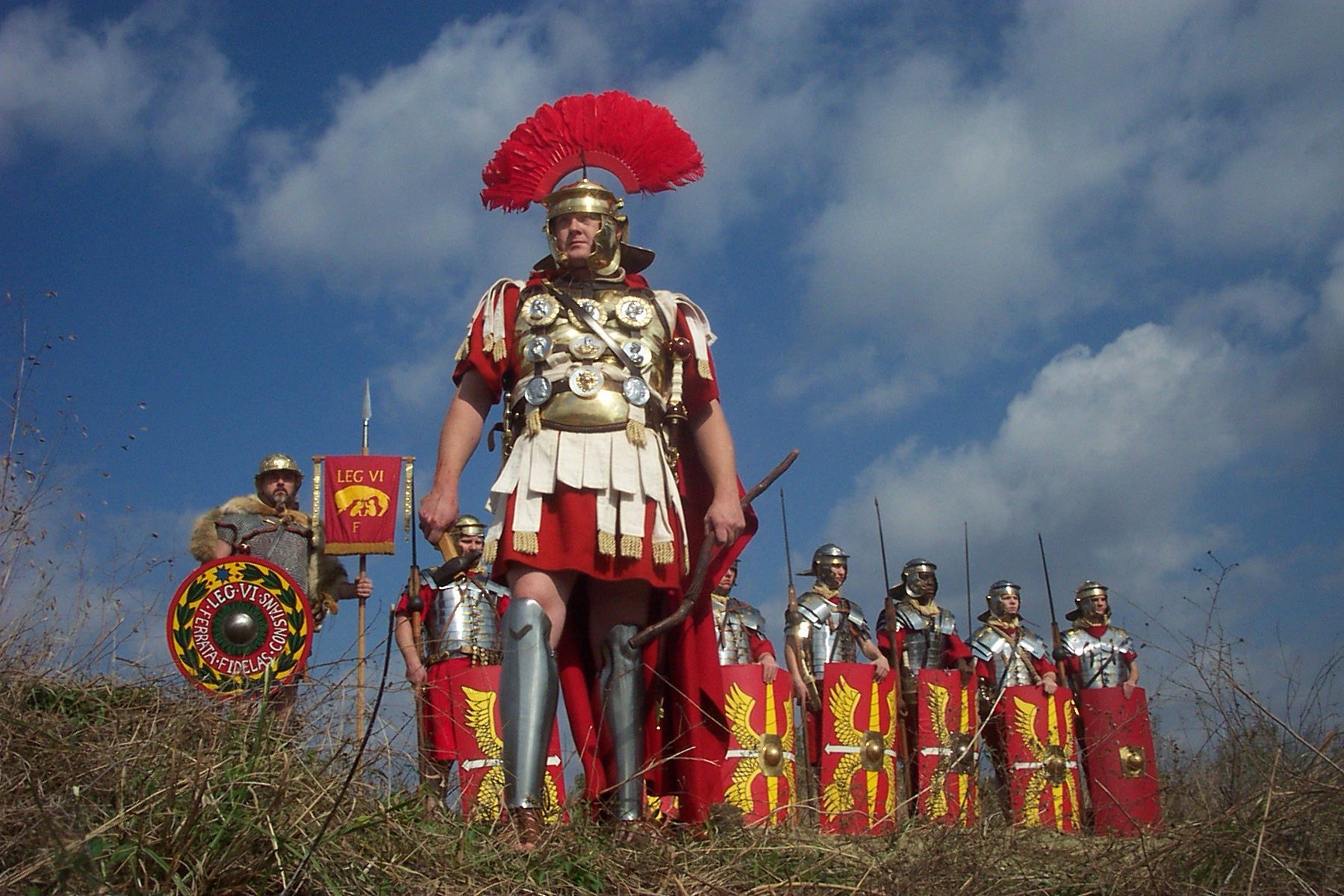The Roman Empire is one of the most remarkable and influential civilizations in history. From its legendary founding in 753 BCE to its fall in 476 CE, Rome left an enduring legacy that shaped Western culture, politics, and society. The empire was known for its military prowess, engineering marvels, legal innovations, and cultural achievements. Its impact is still visible today, and the sheer scope and complexity of Roman civilization continue to fascinate historians and enthusiasts alike. Here are 15 mindblowing facts about the Roman Empire that highlight its grandeur, innovation, and enduring influence.
1. The Roman Empire Was Enormous
At its peak in the 2nd century CE, the Roman Empire stretched over 5 million square kilometers (about 1.9 million square miles), encompassing regions that are now part of over 40 modern countries across Europe, Asia, and North Africa. The empire included vast territories from the British Isles in the north to Egypt in the south, and from the Atlantic Ocean in the west to the Middle East in the east. The Romans managed to govern this massive area through a highly organized system of provinces and an extensive network of roads.
The sheer size of the empire meant that the Romans were in contact with a diverse range of cultures, religions, and societies. This geographical spread helped the Romans assimilate various customs and practices, creating a unique, multicultural empire that promoted the exchange of ideas, goods, and technologies. The size and influence of the Roman Empire were unprecedented and set a benchmark that few civilizations have matched.
2. Rome Had an Incredibly Advanced Road Network
The phrase “All roads lead to Rome” reflects a literal truth; the Romans constructed over 400,000 kilometers of roads, with 80,000 kilometers paved, which connected the empire. Roman roads were engineering marvels, built with multiple layers of stones, gravel, and sand, allowing them to withstand heavy use and adverse weather conditions. These roads facilitated trade, military movements, and communication across vast distances, enhancing Rome’s control over its territories.
Roman roads were so well-built that many of them are still in use today. This infrastructure was a crucial factor in Rome’s success, enabling rapid deployment of troops and efficient administration of the empire. The roads weren’t just a means of transport; they symbolized Rome’s power and unity, reminding everyone of the empire’s reach and influence.
3. Roman Concrete Was Revolutionary
The Romans developed a type of concrete that was exceptionally durable and set underwater, making it ideal for constructing aqueducts, bridges, and harbors. Roman concrete, known as opus caementicium, included volcanic ash, which helped it resist cracking and allowed structures to endure for centuries. Modern scientists are still studying Roman concrete to understand its composition, as it has outlasted many modern materials.
Some of Rome’s most iconic structures, such as the Pantheon and the Colosseum, were built with this remarkable material. The durability of Roman concrete has puzzled engineers for centuries and is now seen as one of the secrets behind the empire’s long-lasting architectural legacy. The recipe for this concrete was lost after the fall of the empire, making it one of Rome’s most fascinating and enduring achievements.
4. The Romans Built an Extensive System of Aqueducts
The Roman Empire was known for its aqueducts, which transported fresh water from distant sources into cities and towns. The Romans built over 500 miles of aqueducts, supplying urban centers with clean water for drinking, bathing, and sanitation. These aqueducts used a gentle gradient to move water over long distances, showcasing the Romans’ engineering skill and understanding of hydraulics.
Aqueducts were vital for public health, and their existence allowed Rome’s urban population to grow to unprecedented levels for the time. Not only were aqueducts practical, but they were also monumental symbols of Roman ingenuity and power. Many of these aqueducts remain standing today, a testament to their durability and the Romans’ advanced approach to urban planning.
5. The Roman Legal System Influences Modern Law
The Romans developed a sophisticated legal system, Roman law, that has influenced many legal systems worldwide, particularly in Europe and Latin America. Roman law introduced concepts like innocent until proven guilty, the right to a fair trial, and the idea of legal representation. The Corpus Juris Civilis (Body of Civil Law) compiled by Emperor Justinian in the 6th century became the foundation for many modern legal codes.
Roman law emphasized the importance of justice, property rights, and individual responsibilities. Its principles were so advanced that they have endured and evolved into the foundations of civil law in many countries today. The impact of Roman law highlights how the empire’s legacy extends beyond military and architectural achievements to fundamental ideas about justice and human rights.
6. Rome Had One of the World’s First Professional Armies
The Roman Empire was famous for its powerful military, which was one of the first in history to become a professional standing army. Roman soldiers, or legionaries, were highly trained and served long terms, often around 20 years. They were well-paid and rewarded with land or money upon retirement. The discipline, organization, and advanced training of the Roman army allowed Rome to conquer and control vast territories.
The Roman legions were renowned for their tactical formations, such as the testudo (tortoise) formation, which protected soldiers with a wall of shields on all sides. The professionalism of the Roman military set it apart from other armies of the time and contributed significantly to Rome’s ability to maintain control over its vast empire.
7. Romans Practiced Religious Tolerance
The Romans were surprisingly tolerant of different religions, allowing conquered peoples to continue worshiping their own gods as long as they paid tribute to Rome. The pantheon of Roman gods grew to include deities from various cultures, blending religious practices from the Greeks, Egyptians, and others. This tolerance helped Rome maintain stability across diverse regions and fostered an environment where different cultures could coexist.
However, there were some exceptions; early Christians faced persecution because they refused to worship the emperor or the Roman gods. Eventually, though, Christianity was legalized under Emperor Constantine in the early 4th century, and it later became the state religion. This shift demonstrated the flexibility of Roman religious policies and foreshadowed the empire’s eventual role in shaping Western Christianity.
8. The Romans Created the Julian Calendar
The modern calendar has its roots in the Julian calendar, introduced by Julius Caesar in 46 BCE. The Julian calendar was revolutionary because it based the year on the solar cycle, with 365 days divided into 12 months and an additional leap day every four years to account for the extra quarter-day in each year. This system was an improvement over previous lunar-based calendars, which were less consistent and caused confusion with seasonal events.
Although the Gregorian calendar, introduced in 1582, eventually replaced the Julian calendar, many aspects of our current system, such as the month names and the structure of the year, are inherited from Rome. The Julian calendar showcases Rome’s influence on timekeeping and its contributions to the organization of modern life.
9. Romans Had Heated Floors and Baths
The Romans were masters of public infrastructure, including heated floors and public baths that contributed to urban sanitation and comfort. Hypocausts—an ancient Roman system of underfloor heating—were installed in wealthy homes and bathhouses. This system used a furnace to circulate hot air beneath the floors and into the walls, effectively heating rooms and pools in bathhouses.
Public baths were social hubs, where citizens could relax, exercise, and socialize. These baths had a complex system of heated rooms, such as the caldarium (hot bath), tepidarium (warm bath), and frigidarium (cold bath). The Romans’ advancements in heating and public sanitation highlight their ingenuity in enhancing daily life and underscore their contributions to modern infrastructure and urban design.
10. The Colosseum Hosted Brutal Spectacles
The Colosseum, one of Rome’s most famous landmarks, was an enormous amphitheater that could hold up to 80,000 spectators. It was primarily used for gladiator battles, animal hunts, and mock naval battles. These brutal events were staged for public entertainment and to demonstrate Rome’s power and control over nature and enemies. Gladiators, often slaves or prisoners of war, fought to the death, while exotic animals were imported from across the empire to participate in staged hunts.
The Colosseum reflects Rome’s appetite for spectacle and its willingness to invest in grand structures for public enjoyment. While these events were harsh and violent, they served as a tool for social cohesion, providing a way to unify diverse groups within the empire through shared entertainment. The Colosseum remains a symbol of both Rome’s architectural skill and its complex social dynamics.
11. The Romans Had an Advanced Postal System
The Roman Empire operated an efficient postal system called the Cursus Publicus, which was established to deliver official messages and communications across the empire. This system used relay stations with fresh horses, messengers, and post roads to ensure messages traveled quickly and securely over long distances. The postal service was primarily for government use but laid the foundation for organized communication systems in Europe.
The Cursus Publicus demonstrates the importance Rome placed on effective communication and administrative efficiency, enabling the empire to maintain control and coordination over its vast territories. The system was an impressive feat of logistics, contributing to the stability and governance of the Roman Empire.
12. Romans Practiced Advanced Medicine
Roman medicine was surprisingly advanced, with physicians like Galen contributing to medical knowledge that influenced Western medicine for centuries. Roman doctors performed surgeries, set broken bones, and practiced various forms of wound treatment. Public health was also a concern, with Rome implementing measures for sanitation, such as public baths and sewer systems like the Cloaca Maxima.
The emphasis on sanitation and public health reflects Rome’s progressive approach to medical science and health care. Though not without limitations, Roman medicine incorporated practical techniques and an understanding of hygiene, laying an early foundation for modern medical practices and public health systems.
13. The Romans Created the Concept of Welfare
Rome had an early form of social welfare called annona, a grain dole provided to the city’s poor. Initially started to prevent starvation and riots, the annona allowed Roman citizens, especially in the capital, to access subsidized or free grain. This program showed the state’s commitment to supporting the urban poor and maintaining social stability.
The welfare system in Rome reflects a recognition of the need to care for vulnerable citizens and prevent social unrest. The annona was a form of state-sponsored support that, while limited compared to modern standards, laid the groundwork for later social welfare programs in other societies.
14. Rome Was Not Built in a Day—It Took Over 1,000 Years
Rome’s growth from a small settlement to an expansive empire took centuries, showcasing gradual expansion, war, and assimilation of neighboring cultures. From the Republic to the Empire, Rome’s development spanned over a millennium, with the city of Rome itself evolving through various stages. The saying, “Rome wasn’t built in a day,” captures the patience and effort required to build such an enduring civilization.
The rise and expansion of Rome show how empires are forged not overnight, but through strategic growth, diplomacy, and integration. The fact that Rome’s influence lasted so long highlights the empire’s capacity for adaptation, resilience, and innovation.
15. The Fall of Rome Was a Long Process, Not a Single Event
The fall of Rome is often marked by the sacking of the city by the Visigoths in 410 CE or the deposition of the last emperor, Romulus Augustulus, in 476 CE. However, the decline of the Roman Empire was a long and complex process, involving economic difficulties, internal strife, invasions by various groups, and administrative challenges. The Eastern Roman Empire, or Byzantine Empire, continued to thrive for another millennium after the Western Empire’s fall.
Rome’s gradual decline challenges the idea of sudden collapse, showing that even powerful empires can fall slowly as internal and external pressures accumulate. The story of Rome’s fall provides insight into the factors that can destabilize even the most formidable civilizations, highlighting lessons in resilience and adaptation.
The Roman Empire remains one of the most influential forces in human history, with legacies that continue to shape our world in profound ways. From monumental engineering feats to groundbreaking legal principles, the Romans built a civilization that pushed the boundaries of what was possible. Their innovations in governance, military organization, architecture, and culture set standards that have endured for millennia, becoming the bedrock of modern Western society. Understanding the complexities and achievements of Rome offers us valuable insights into human ingenuity, resilience, and the powerful impact of cultural exchange. As we look back on the empire’s enduring influence, it serves as both a reminder of human potential and a testament to the lasting power of great ideas and ambitious visions.




